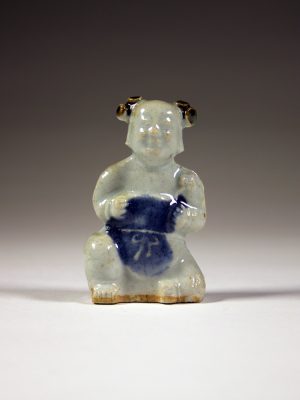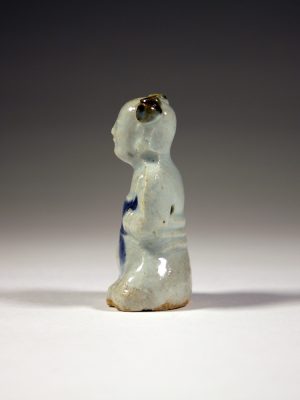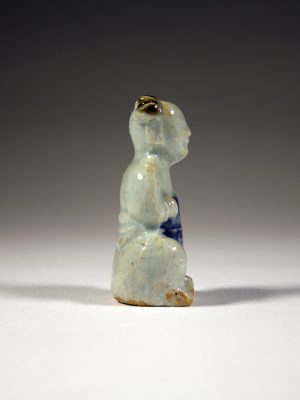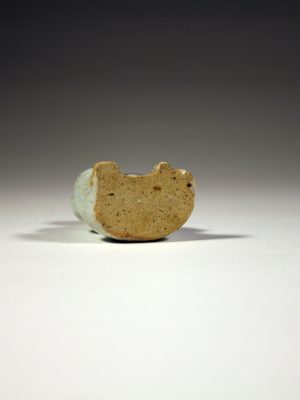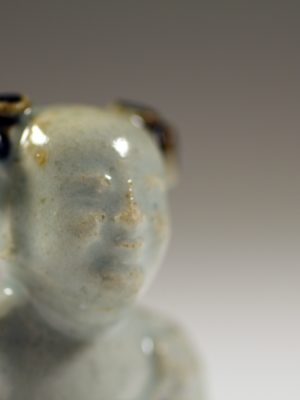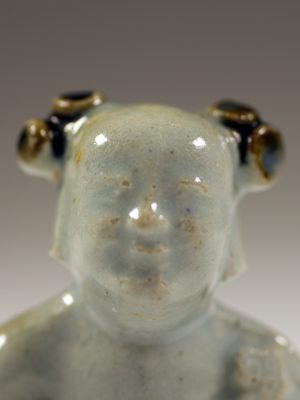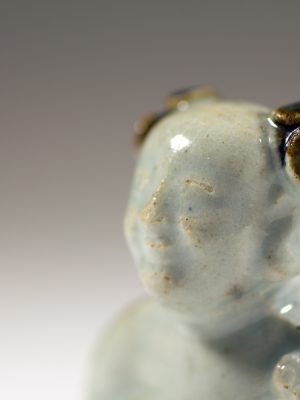Seated Boys were a staple of Chinese Export porcelain in the eighteenth and nineteenth centuries. A sought after novelty in the west. Multiple shipwrecks discovered in the late twentieth century confirm this. The Cau Mau c.1725, the Nanking c.1752, and the Tek Sing c.1825 all contained variations of this type in their cargos. A testament to their enduring popularity.
While this looks like an eighteenth century example it could be later. Seated Boys from the Cau Mau and Nanking look the same from the back but different from the front. Those examples have added on Ru Yi sceptres and hands, not moulded in place as they are here. This may indicate a later date but not necessarily. It may just be a less detailed model from the same period. Research is ongoing.
This Seated Boy appears to have been passed down through the generations. The evidence is as follows. There are three tiny flee bites to the base edge caused by mishandling. There is a star crack to the rear that has become stained with dirt and oils. There was a greasy build up under his chin, now cleaned away, that was likely the result of having been handled over an extended period. Not the kind of details one would expect to see if most of its history was spent at the bottom the ocean.
The Ru Yi sceptre the Seated Boy holds in his left hand is a symbol of good fortune.
7.7 cm in height.

